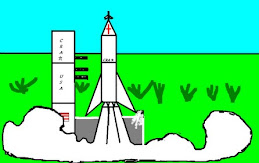Quite a number of ancient tombs have been found in Jerusalem since the 1970s. In 1980, a group of ten of the limestone boxes, the Talpiot tomb, was discovered to hold ossuaries inscribed as belonging to people “with names believed to be associated with key figures in the New Testament: Jesus, Mary, Matthew, Joseph and Mary Magdalene. A sixth inscription, written in Aramaic, translates to "Judah Son of Jesus." This linked web site of the Discovery Channel gives a complete description of the find.
The news centers now on a documentary that will air on Sunday, March 4, at 9:00 pm eastern time. The DC web site says, “In the feature documentary The Lost Tomb of Jesus a case is made that the 2,000-year-old ‘Tomb of the Ten Ossuaries’ belonged to the family of Jesus of Nazareth.”
According to the Discovery Channel article, “All leading epigraphers agree about the inscriptions. All archaeologists confirm the nature of the find. It comes down to a matter of statistics. A statistical study commissioned by the broadcasters (Discovery Channel/ Vision Canada/ C4 UK) concludes that the probability factor is 600 to 1 in favor of this tomb being the tomb of Jesus of Nazareth and his family.
“The film also documents DNA extraction from human residue found in two of the ossuaries and reveals new evidence that throws light on Jesus' relationship with Mary Magdalene.” Reading on, we find that the DNA showed that this Jesus and Mary were not siblings.
Continuing, the writer says:
“The documentary includes dramatic recreations, based on the latest historical evidence, illustrating accurate images of Jesus of Nazareth, his family, his followers, his ministry, his crucifixion and his entombment.
“Part archaeological adventure, part Biblical history, part forensic science, part theological controversy: this is a story that will be carried around the world.”
The DC web site also carries a section called “Theology,” in which possible meanings of this tomb and ossuary are discussed.
Concerning the resurrection, the writer says this:
“It is a matter of Christian faith that Jesus of Nazareth was resurrected from the dead three days after his crucifixion circa 30 C.E. This is a central tenet of Christian theology, repeated in all four Gospels. The Lost Tomb of Jesus does not challenge this belief. In the Gospel of Matthew (28:12) it states that a rumor was circulating in Jerusalem at the time of Jesus’ crucifixion. This story holds that Jesus' body was moved by his disciples from the tomb of Joseph of Arimathea, where he was temporarily buried. Ostensibly, his remains were taken to a permanent family tomb. Though Matthew calls this rumor a lie circulated by the high priests, it appears in his Gospel as one of the stories surrounding Jesus’ disappearance from the initial tomb where he was buried. Even if Jesus' body was moved from one tomb to another, however, that does not mean that he could not have been resurrected from the second tomb. Belief in the resurrection is based not on which tomb he was buried in, but on alleged sightings of Jesus that occurred after his burial and documented in the Gospels.”
I think it will be very interesting and important to see this film. I believe many Christians may refuse to watch it because some of the "experts" claim to have here a discovery that disputes Christian beliefs that Jesus rose from the dead (even though the filmmakers say it "does not challenge" this belief). However, I believe Christians should see it so that they will be able to discuss it with full knowledge and understanding of the film’s content.
Some people work very hard, trying to find evidence that Jesus is not the son of God. But our faith can stand scrutiny. God is doing a new thing in these days—something really exciting is going on. Maybe a new “Great Awakening” is coming.
Tomb of the Ten Ossuaries
http://connectionsgodandtheworld.blogspot.com/2007/02/tomb-of-ten-ossuaries.html











